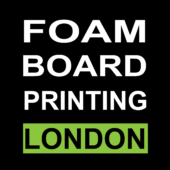Understanding PVC Foam Board: A Versatile Material for Multiple Applications
PVC foam board, also known as polyvinyl chloride foam board, is a lightweight, rigid material widely used in various industries. It is made from expanded PVC, a type of plastic that combines the properties of wood and plastic to create a durable and versatile product. This material is popular due to its ease of use, cost-effectiveness, and adaptability to different applications, from signage to construction.
Composition and Manufacturing Process
PVC foam boards are produced by combining polyvinyl chloride with various chemicals to create a foam-like structure. The manufacturing process typically involves extrusion, where the PVC is heated and expanded with the help of blowing agents. The result is a board with a closed-cell structure, which gives it strength and rigidity while keeping it lightweight.
The surface of PVC foam board is smooth and can be easily printed, painted, or laminated. It can also be cut, drilled, and shaped with standard woodworking tools, making it highly adaptable for different uses. PVC foam boards come in various thicknesses and sizes, depending on the application requirements.
Applications of PVC Foam Board
PVC foam board is used in a wide range of applications due to its unique properties. Some of the most common uses include:
- Signage and Advertising: PVC foam board is widely used in the signage industry due to its smooth surface and ease of printing. It is ideal for creating high-quality, vibrant signs that are both durable and weather-resistant. The material is also lightweight, making it easy to install and transport.
- Construction and Building Materials: In the construction industry, PVC foam board is used for interior and exterior wall cladding, false ceilings, and partitioning. It is resistant to moisture, chemicals, and corrosion, making it suitable for use in damp environments. Additionally, its insulation properties make it an excellent choice for thermal and acoustic insulation.
- Furniture and Cabinetry: PVC foam board is an alternative to wood in furniture manufacturing. It is used to create cabinets, shelves, and other furniture pieces due to its lightweight and durable nature. The material is also resistant to termites and other pests, making it a long-lasting option for furniture.
- Exhibition Displays and Models: PVC foam board is commonly used in the creation of exhibition displays, models, and prototypes. Its lightweight nature allows for easy handling and transport, while its smooth surface is ideal for creating detailed and attractive displays.
- Arts and Crafts: Artists and hobbyists often use PVC foam board for various creative projects. It can be easily cut and shaped, making it suitable for sculptures, models, and other artistic endeavors.
Advantages of PVC Foam Board
PVC foam board offers several advantages that make it a preferred material in various industries:
- Lightweight: Despite its rigidity, PVC foam board is remarkably lightweight, making it easy to handle and install.
- Durable: The material is resistant to water, chemicals, and UV rays, ensuring long-lasting performance even in harsh environments.
- Versatile: PVC foam board can be easily cut, shaped, and painted, making it suitable for a wide range of applications.
- Cost-Effective: Compared to other materials like wood and metal, PVC foam board is relatively inexpensive, offering a cost-effective solution for many projects.
Conclusion
PVC foam board is a versatile and durable material that has found its place in various industries, from advertising and signage to construction and furniture. Its lightweight nature, ease of use, and resistance to moisture and chemicals make it an ideal choice for a wide range of applications. Whether you are looking to create eye-catching signs, durable furniture, or intricate models, PVC foam board provides a reliable and cost-effective solution. Its adaptability and numerous advantages ensure that it will continue to be a popular material in the years to come.
